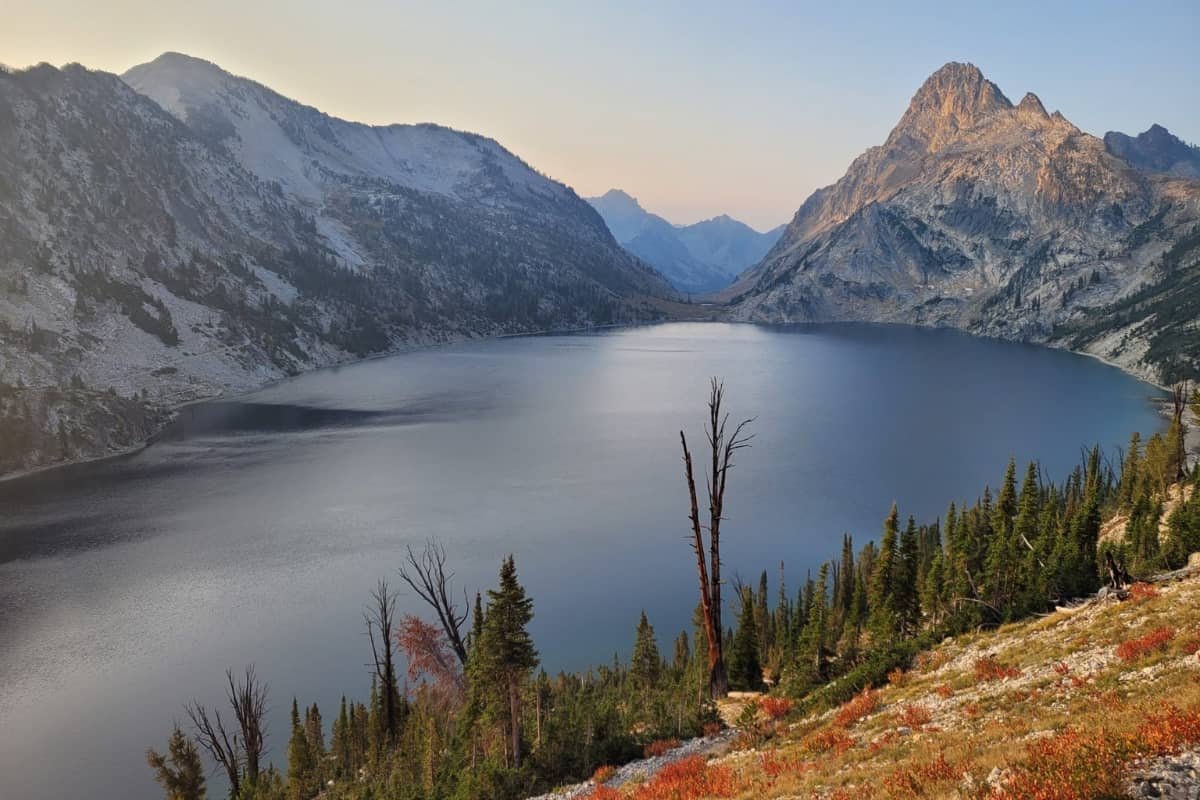The Sawtooth Wilderness in Idaho is a breathtaking, rugged landscape that promises adventurers a truly unforgettable experience. For those who seek the thrill of the great outdoors, this loop trail offers a blend of stunning natural beauty, challenging terrain, and the peace of isolation. In this article, we’ll dive into one hiker’s journey through the Sawtooth Wilderness, sharing insights, tips, and recommendations to help you prepare for your own adventure.
Discovering the Sawtooth Wilderness Trail
The Sawtooth Wilderness Trail is a hidden gem that many hikers overlook in favor of more famous trails. Located in Idaho, this trail is perfect for those looking to explore a less crowded, yet equally stunning, natural environment. The trail is accessible via multiple entry points, but our hiker started their journey from the Grand Jean trailhead, which offers free parking and a convenient base for exploring the area.
What makes the Sawtooth Wilderness Trail particularly appealing is its loop structure, allowing hikers to complete the journey and return to their starting point without backtracking. This loop was listed as 62 miles on AllTrails, but the hiker found that the actual distance was closer to 70 miles due to the numerous switchbacks that the map did not fully detail. Despite this, the journey was well worth the effort, with the trail offering diverse landscapes, from wildflower-filled meadows to crystal-clear lakes and jagged mountain peaks.
Preparing for the Journey
Before embarking on this trail, it’s essential to be well-prepared. The Sawtooth Wilderness is a remote area, and while the trail itself is not technically challenging, it does require a good level of fitness and experience due to the distance and elevation changes. The hiker emphasized that while the trail’s elevation gains were manageable, the length of the hike and the need to carry several days’ worth of supplies made it a more demanding experience.
For those who may be newer to long-distance hiking or uncertain about their ability to complete the full loop, our hiker suggests a more gradual approach. A good starting point would be an overnight hike to Sawtooth Lake, one of the many stunning lakes on the trail. This shorter hike allows you to experience the beauty of the area without committing to the full 70-mile journey.
Permits are required to hike in the Sawtooth Wilderness, but the process is simple. You can self-register at the trailhead, making it an easy and straightforward way to start your adventure.
The Beauty of the Sawtooth Wilderness
One of the most striking features of the Sawtooth Wilderness is its sheer natural beauty. The hiker was particularly captivated by the wildflowers, which bloom in vibrant patches of color across the landscape. Each morning, the petals would open, revealing hillsides awash with different hues. The area’s name, Sawtooth, is well-deserved, as the sharp, jagged peaks of the mountains resemble the teeth of a saw, cutting dramatically into the sky.
The trail is also dotted with lakes, each more beautiful than the last. From turquoise waters to deep blue pools, these lakes are a refreshing sight for tired hikers. Almost every lake along the trail has designated campsites, making it easy to find a place to rest for the night. The abundance of water also means that hikers can easily refill their supplies, though it’s always wise to carry a water filter or purification tablets to ensure safe drinking water.
Challenges on the Trail
No hike is without its challenges, and the Sawtooth Wilderness is no exception. The hiker mentioned that mosquitoes were a constant nuisance, especially near water sources. While bug spray offers some protection, covering up with long sleeves and pants is often the best defense. The heat was another significant challenge, with temperatures reaching the high eighties from noon until 5 PM. To cope with the heat, the hiker took frequent water breaks, sought shade whenever possible, and even took naps during the hottest part of the day.
Despite these challenges, the hiker managed to complete the entire loop in just three days, covering over 20 miles per day. However, they advise others to take a more leisurely pace, suggesting that the trail is best enjoyed over four or five days. This allows for more time to take in the scenery, relax by the lakes, and truly appreciate the wilderness.
Wildlife and Safety Considerations
While the Sawtooth Wilderness is home to a variety of wildlife, the hiker noted that they did not encounter much during their journey. Bears are present in the area, and while a bear canister is not required, it is recommended that hikers hang their food or store it in a bear-proof container. The hiker carried bear spray as a precaution but did not need to use it. Other than the occasional woodchuck or squirrel, the wildlife was surprisingly sparse.
Safety on the trail is always a priority. The hiker stressed the importance of being prepared for all conditions, particularly the intense heat and the potential for encounters with wildlife. Additionally, staying hydrated and managing food supplies carefully are crucial for maintaining energy levels and ensuring a successful hike.
Camping and Gear Considerations
Camping in the Sawtooth Wilderness is a rewarding experience, especially when you’re prepared with the right gear. The hiker used a Nemo tent and, for the first time, chose to camp without a rain tarp, allowing them to enjoy the clear night skies. The absence of clouds, however, meant that they missed out on the vibrant colors of sunset and sunrise. The clear skies also led to hot days, making it crucial to find shade and stay cool.
In terms of food, the hiker prioritized efficiency, opting for quick and easy meals that didn’t require extensive preparation. Nut butter, granola, and ready-to-eat snacks replaced the need for a hot meal at every stop. This approach allowed the hiker to maintain momentum and avoid the hassle of setting up a stove multiple times a day. While they carried a Jetboil stove, it was primarily used for the occasional hot meal or drink.
For those interested in the technical aspects of shooting videos in the wilderness, the hiker provided detailed information about their gear and filming techniques. They used a Sony a66100 camera with a 10-18mm lens, capturing footage at 30 frames per second. The hiker locked the color temperature at 5600 Kelvin to maintain consistency throughout the video, which they believe enhances the visual storytelling of the hike.
Living the Nomadic Life
The hiker’s experience in the Sawtooth Wilderness is part of a broader lifestyle choice: living as a nomad. With no permanent home, they travel from place to place, living out of a backpack and a duffel bag. This minimalist approach allows them to explore new places, meet new people, and create content on the go. When not on the trail, they find refuge in small towns, visiting coffee shops to charge their devices, edit videos, and catch up on work.
This nomadic lifestyle is not without its challenges, but the hiker finds it incredibly rewarding. The freedom to explore new places, connect with subscribers, and immerse themselves in nature is a fulfilling way of life. For those considering a similar path, the hiker encourages them to embrace the unknown, make new friends, and cherish the experiences that come with a life on the road.
Conclusion
The Sawtooth Wilderness Trail is more than just a hike; it’s an experience that challenges you physically, rewards you with stunning natural beauty, and offers a glimpse into the nomadic lifestyle. Whether you’re an experienced hiker looking for a new challenge or a beginner eager to explore Idaho’s wild side, the Sawtooth Wilderness has something to offer. With the right preparation, a sense of adventure, and a willingness to embrace the unexpected, your journey through this remarkable landscape will be one to remember.






